Posts Tagged ‘meditation’
October 14th, 2017
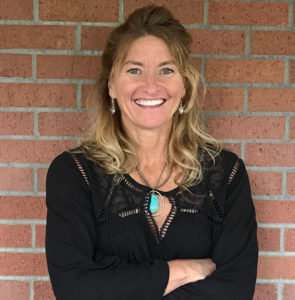
Howdy.
“Your sacred space is where you can find yourself over and over again.” (Joseph Campbell)
My “sacred space” – where I can find myself again and again – is in Solitude, my time alone. Preferably spent hiking up a trail, or walking in very large circles. I’m a lover of Solitude. I yearn for it. (I think Solitude is the medium for self realization. Time alone is one of the most important things we can give ourselves if we want to know who we are, what’s missing, what we’re needing, who and what are most important to us, and what is possible for our life.)
As you probably know by now, I’m a hiker. More generally, I’m a walker.
I have this particular place in my town that I go to almost every day. I walk circles there. Large circles. Sometimes I do this over and over again, alone in my thoughts. Listening to my thoughts. It’s a form of meditation for me. Call me weird, but walking in large circles is something I look forward to. It helps me. I sometimes (read: often) have problems focusing. I’ve got a lot on my mind, and I have enough self awareness to know I tend to be a “future oriented” thinker. (In 2009, I confirmed this after reading The Time Paradox, by Philip Zimbardo and Dr. John Boyd. Did you know our attitudes toward time have a profound impact on our life and world? Yet we seldom recognize it.) So anyhow, these walks help me. They help me to sort out the many thoughts that are in my head.
When I walk, I pay attention to the sounds around me, and the goings-on. I pay attention to how my body feels. I pay attention to how it feels when my feet strike the ground during each single step. (I try to be gentle with my steps because especially as a hiker, I know this helps with recovery after long, hard hikes. Plus, I would prefer be a quiet stepper rather than a loud clomper.) I pay attention to my cadence. I notice my posture, and try to stand and walk tall.
When I walk in circles at my particular place, I listen for birds, and to the the breeze or wind. I hear an occasional airplane taking off or landing. Sometimes a car drives by, but not often. I see other people, but not many. Usually it’s a city worker, or a person unloading his/her horse or horses from their trailer. I often look at the foothills of my beloved Wind River Mountains. I can see the Roaring Fork, and Mt. Arter, and up Sinks Canyon. After a recent storm, I can see where the rain was rain and where the rain was snow – evidenced by a perfect line that usually crosses along the bottom of our foothills at an elevation of about 7,800′. I can see the road that leads to one of my favorite places, our cabin.
I often find heart rocks in the trail, or in the parking lot, and I sometimes spy other shapes. I’ve written before about how I love to look for or find, unexpectedly, heart shapes while on my adventures. No kidding, I’ve even spotted manure that is shaped like a heart. (Please excuse my language, but the hashtag/caption for that image was, #lovableshit) I’ve seen some amazing sunrises and sunsets here, and I’ve video recorded our oldest son as he recites a slam poem he loves or creates.
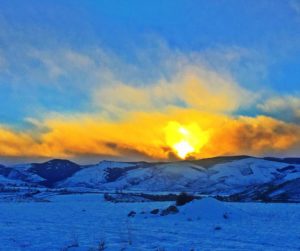
A sunset with a heart shape that I spied while walking circles in my special place.
Most of the time, during these walking meditations, I let my mind wander and be free. I get many inspirations this way. Other times I try to focus my attention on a very particular thing – a problem, perhaps, or a conundrum, or an idea I want to develop, or a decision I’m wanting or needing to make. Sometimes I’ll use my walking in circles to try and memorize a favorite poem or quote. Sometimes I’ll try to empty my mind. That never works! I always smile when someone refers to an “idle mind” as being a non-active mind. (#envy)
Dov Seidman, CEO of LRN, says it best: When you press the pause button on a machine, it stops, but when you press the pause button on human beings, they start. Indeed! When we’re still, our minds are often at their most active. I am a huge promoter of, and practicer of a mindfulness practice. I’ve had a practice every single weekday morning for years now, and it’s been a game changer. Because I have such an active and wandering mind, I get extensive practice at redirecting my attention, which is one the main things we’re going for when we practice mindfulness – the ability to consciously direct our attention. Such practice helps us learn how, especially during times of stress and overwhelm, to pause, and respond rather than react.
My mind is so active that I – it – craves focus. Last August, I climbed Gannett Peak, Wyoming’s tallest mountain. On summit day, according to my FitBit, we trekked 20,547 steps. Every single one of those steps were “high consequence” steps. It was a quiet, intense effort. Not many words were spoken during the 12-hour adventure, except for the short time on the summit, and when instruction was offered to us from our guide. Otherwise, I was completely focused on every single step. Until then, I had never engaged in such a sustained, high consequence experience. My mind is always thinking, and so active. I found the single-minded, single-tasking a welcome reprieve from my busy mind. Traveling on snow and up and down steep terrain, roped to one another, forced me to focus on only the next step, and then the next step, and then next step, for hours at a stretch. It was hard, but also unusual for me – and fantastic. The simplicity and intense, sustained focus on a single thing was blissful.
But back to my walking in circles. Always, they help me. May Sarton wrote, “Everything that slows us down and forces patience, everything that sets us back into the slow circles of nature, is a help.” I always return inspired, better, and with newfound clarity.
I also go to this place and walk circles during most of my coaching, or other calls. I work with people from all over the U.S, and typically I will have 1-2 calls a month with each of them. I am a better listener when I’m in an “open” posture, and walking, rather than sitting in front of my computer or indoors. I’m easily distracted, so one of the best ways for me to be a good listener is to free myself from distractions. And one of the best ways to be free from distractions is to get outdoors, in the open, under our usually-clear skies. I can be most present with someone by listening to them, and I just know by now that I’m a better listener and a more creative coach when I’m walking and outside, completely “tuned in”, listening and paying close attention.
Focusing on listening helps me be more present on my calls, which also helps me remember important and meaningful moments, and conversations. (This is so true that I can remember, vividly, some of the specific moments or conversations I’ve had with various clients, or friends, by retracing steps, and the path I was on, during a particular call I had with them.)
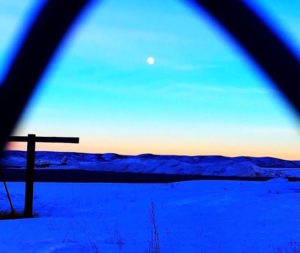
A moon through the chain link fence that surrounds the place where I like to walk in large circles.
I’m more creative and energized when walking. There are numerous studies that support this – that walking is energizing, and that time outdoors does our bodies, and our minds, good. That we’re more creative thinkers as a result. Plus, walking is healthy.
I don’t believe there’s a single study that says sitting is inspiring, or that sitting is energizing. If anything, only the opposite. And sitting is bad for other, more serious reasons, too. Sitting, in fact, is often referred to as the new smoking. We sit, on average, 9.3 hours a day. All this time sitting is robbing quality, and time from our life. The more we sit, the more likely we are to suffer from depression, disease and cancer. Sitting shortens our life, which, in my humble opinion, is already too short.
I started using a FitBit in December 2013. I did this because even though I train hard and regularly, and hike long distances, most of the day I was sedentary, at my laptop. As fit as I was when I got my FitBit, I was only walking about 6,000 steps a day on the days I wasn’t hiking. I wanted to change that. I needed to change that. Today, I average about 20,000 steps a day. I’ve walked almost 25 million steps (11,000 miles). Many of these steps and miles have been logged during my walking calls in this particular place where I go to walk my circles.
Speaking of walking and health, I’m a huge fan of the Blue Zones way of living, and the work of Dan Buettner. (I highly recommend the book, The Blue Zones: Lessons for Living Longer From the People Who’ve Lived the Longest.) “Blue Zones” is an anthropological concept that describes the characteristic lifestyles and the environments of the world’s longest-lived people. It turns out the people who live the longest, most fulfilling lives don’t lift weight or run marathons. They simply are more active throughout the day. Among other things, they walk a lot. They walk to the store, or to church. (I will save all I have to say about this for another blog post, though.)
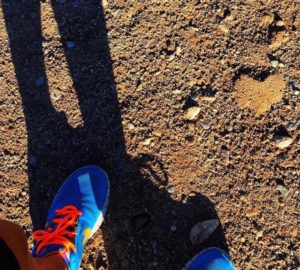
A heart shaped by dirt in a parking lot where I walk circles, after a little rain.
During the last few months, I’ve had to find a different place to have my walking calls. You see, there is a lot of heavy construction going on near my usual location. Not to be self-absorbed, but I hope the project is completed before too much longer. It’s not the quiet place I’ve come to really appreciate. There is a bunch of heavy equipment driving by all of the time, and you can hear their beeps and big engines and scooping and grading sounds in the background. As a result, it’s currently not the quiet experience I’ve grown accustomed to, and therefore it’s hard to hear the person on the other end of my call, and hard for them to hear me. So at least for now, I’ve found an alternative for my walking calls.
But I still often head up there for my walking meditations – for 30-90 minutes of sauntering to clear my mind or figure something out, or just to walk. To move my body and to free my mind. (Whenever I try to talk myself out of going for a walk or a hike, I remember a quote from one of my favorite writers, Rebecca Solnit: “Every walker is a guard on patrol to protect the ineffable.” I always return from a walk as more than I was before it, and I am always surprised by something during the walk.)
Yesterday, as I did this, I worked hard to silence, or at least quiet, the background sounds of the construction. I couldn’t do it. It was during this struggle that I realized what was going on around me is exactly what’s going on in my mind right now. What’s in my head is very much “under construction.” I’ve got all kinds of projects on tap, ideas that are percolating, dreams and goals. So you see, there is a lot of heavy equipment maneuvering around, trying to create something new, or better. There is a lot of digging dirt and moving of Earth going on, and supplies being hauled and things being surveyed. My mind feels full of clutter, and often, as if a collision of heavy equipment could occur at any moment. This reminds me I better take great care, and be mindful. At times I hear a loud, constant beeping of a tractor or backhoe, and there is a constant humming of moving trucks and equipment. Around me as I walk, and also in my head…
One of the reasons I love this particular place for my walking is because at times I get to watch a small airplane taking off. Sometimes it’s a beginner pilot taking a lesson. He or she is literally learning how to fly, and I am a witness. I love that metaphor of a person learning to fly. Depending on what I’m working on or trying to create in my life, I often feel like I’m learning to fly, and that I’m a small, humble airplane working to take flight. Other times I get to see an airplane land. That’s also a big deal, watching how a small airplane comes in fast and connects with ground. How it must at some point return to Earth, to once again be grounded.
Every once in awhile, while walking in my particular spot, I’ll see a woman barrel racing. She’s riding her horse very fast and maneuvering around a barrel at top speed. I am envious. I don’t know her, and there are different women who show up to do this at various times throughout the year. But whomever the woman is, usually she’s riding at top speed on this beautiful and powerful animal that she somehow has under her control. Her hair, under her cowboy hat, is highlighted by the sun, and blowing in the breeze. Total Badassery. I love this as a metaphor, too. I often feel like I’m a fast horse, only I’m not skilled like the woman I watch. I don’t know how to steer it, let alone stay on it. I envy the barrel racer, and am inspired when I watch her do such a daring thing.
And although the heavy construction that’s going on near my particular walking place for the time being is cramping my style, it too, is a fitting metaphor. I’m right now under construction in a lot of areas, and I know that to get it right – to create something great, or to improve something I’ve already created, or am already doing – will take time and work.
What’s that saying I’m thinking about right now?
Hint: Now my mind wanders to Rome, a city that my family and I fell in love with on our 30-day Europe trip two summers ago. That’s it, after a search of my mind, I found it: “Rome wasn’t built in a day.”
After my circles-walking ended yesterday I emailed my Dad to ask him what the construction project was since I could only make assumptions. He told me the runway at our airport is being relocated and re-built to increase safety. The FAA was concerned about the runway being too close to the taxiway. There was a risk that a small plane taking off or landing might clip the wing of a plane that was on a taxiway.
I’m so glad I asked! As a metaphor lover, this news is brilliant, and helps me to circle back (pun intended) to my main point of this blog post. Right now, my mind is so full of projects that are under construction that it sometimes feels like a collision is inevitable. Walking in large circles helps me by providing more space for the goings on in my mind and avoids any of my idea’s wings from being clipped.
Postscript: As you can see in the photo below that my son captured of me at 10:48 on this Saturday, Oct. 14, I walk my circles even when the weather is unfavorable. To my delight, I found my place to be quiet once again. (We awoke to a major blizzard, which has shut down construction, at least temporarily.) I’ll take that as a cue and try to do the same with myself, and my overactive mind this Saturday.
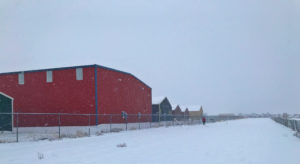
Walking in circles in a blizzard today, Oct. 14, 2017.
Thank you so much for stopping by and reading. I really appreciate it!
Do you want to change your life? I can’t change your life, but I can help you change it. In fact, I’d be honored to help you do that. Email me!
March 6th, 2017
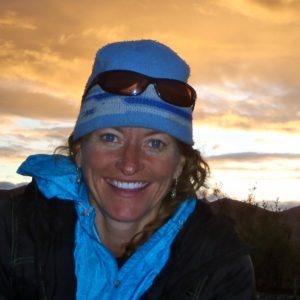
Howdy!
The summer before I entered 3rd grade, we moved from town, “to the country.” I was excited. We had 10 acres and a big yard. I spent hours playing in the red rock cliffs and exploring the land around our home. Come to think of it, that move to the country likely deserves a lot of credit for my love of nature and its role in my life and work.
My brother, Michael, wasn’t born yet, so at the time, it was just my sisters, Alicia and Amber, and I. Our house in the country was located exactly 2.9 miles from town. We all had different interests, which meant my Mom spent a great deal of time driving us to and from our various activities. Now, as a parent of three children, I really appreciate all of the time sacrificed by my mom so we could participate in our activities.
One year for her birthday, my Dad surprised my mom with a red 1966 Thunderbird. Even though my Dad was/is the car enthusiast, my Mom loved that Thunderbird. It was a beauty!

A 1966 Thunderbird, just like the one my Mom drove us in to and from our activities.
After swim practice one evening, my mom was driving us three girls home. It was dark, and we were in the red Thunderbird. My mom knew this road well by now, and, as a result, we made the trip to and from home in short order! We were zooming along, sliding on the car seat in the back from side to side as she took the corners on the winding road, and suddenly, the headlights went out.
I’ll never forget it. We were cruising around “killer corner” and suddenly, nothing. Total darkness. Talk about Epic, and not in a good way… Of course this all happened in seconds, but it felt like an eternity as I recall it now and play it back in my mind. I remember our first instinct was to try to see. We tried harder to see the road and to get our bearings as we tried coaching my mom through the darkness. Probably just seconds later, but later all the same, it occurred to us to use the brakes, slow down and try to pull the car over. I know – go ahead and say it – Duh!
Note: I recently asked both of my sisters about this to make sure it wasn’t just me remembering it this way. They remembered it the same way. And for the record, while none of us is a rocket scientist or brain surgeon, I assure you we have brains and know how to use them. 🙂
I’ve thought a lot lately about this trip home in the red Thunderbird, traveling pretty fast when the headlights suddenly went out. It is a mystery and a marvel to me that when that happened, the first instinct was not to use the brakes and stop the car, but rather to try harder to see what was no longer visible.
This is pretty much what happens when our life feels out of control, or when something really serious happens that was not expected. Our tendency is to try harder to deal with it while proceeding rather than to pause and to “pull the car over.”
It’s instinctual survival, and there’s not a lot of thinking going on. Things are moving and coming at me quickly, and I’m adjusting on the fly, ducking and dodging but continuing to move nonetheless. Unconsciously saying Yes to everything. Not being mindful because I’m not slowing down long enough to pause and to think.
For many years, it never occurred to me to apply the brakes or even to slow down, or that saying No was an option. I would just react, over and over and over again in a given day, or in a given hour.
Thankfully, I’m much wiser now. Not always, but most of the time, I respond rather than react. I’ve learned, personally, and by witnessing numerous conscious, mindful people, that responding and reacting are two different things. The first is thoughtful, the second is not.
I would say responding is similar to applying the brakes. Not suddenly but gradually enough to be safe and to get an opportunity to size up the situation. Whereas reacting is proceeding blindly at a too-high rate of speed while trying to figure things out in the process and hoping for the best. (Good luck with that!)
Viktor Frankl, a Nazi concentration camp survivor and author of one of my most influential reads, Man’s Search for Meaning, writes, Between stimulus and response there is a space. In that space is our power to choose our response.
The challenge for many of us is learning how to create that space – that pause that allows us to thoughtfully respond rather than react.
The answer, in my humble opinion and experience, is to be more mindful. Although I had meditated off and on since my early 20s – for more than 25 years – it wasn’t until February of 2013 that I started practicing mindfulness on a regular basis. For the last several years I’ve included a brief mindfulness practice every single weekday, in the morning, before my day officially gets under way.
And what a difference it has made. It has been nothing less than a game changer. Before practicing mindfulness regularly, I didn’t have that space that Frankl referenced. Especially when I needed it most, during times of stress and overwhelm. Now I am able to create it.
The space and pause I am now able to create during times of overwhelm is not long-lasting; it’s fleeting, even. But it’s long enough to be thoughtful in determining how to proceed. For example, it’s long enough to take a deep breath and think about my words before flying off the handle at my husband or sons. It’s long enough to help me course-correct when I find myself reaching for the peanut butter jar. It’s long enough for me to figure out how I want to respond when a United Airlines agent tells me my flight is overbooked and I may not have a seat on the flight I reserved. It’s long enough to prevent me from completely unwrapping a Dove dark chocolate and popping it my mouth. It’s long enough to not hit Send on that email, or Post on that Facebook post that I’m not certain I want to share with the world. It’s long enough to help me notice if I haven’t been in touch with someone who matters to me. It’s long enough for me to choose how to respond. I don’t always make the wise decision, but most of the time, I get a brief space, during which I choose how to respond.
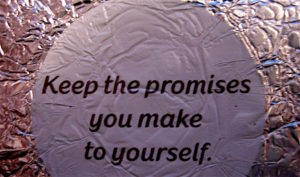
The Universe is funny. Being mindful helps me create a pause that most of the time is just long enough to unwrap my Dove dark chocolate… and decide not to eat it. (This extra reminder in the form of a message, certainly didn’t hurt, either.)
For starting a mindfulness practice, I have many tools, but my favorite is Headspace, an app I highly recommend to friends and all of the leaders I coach and work with. (You can sign up for a free, 10-day trial) Headspace founder Andy Puddicomb has a great Ted Talk. Check it out, and then download the app if you haven’t already. It’s a very simple, guided mindfulness practice, and comes bundled with packets of sessions in categories such as Health, Relationships, etc. I especially like the Health/Anxiety pack, but they are all worthwhile, and I recommend starting with the basic, 10-day, 10-minute practice.
Being mindful not only helps us personally, but it helps those around us, who are affected by our behaviors. Freaking out is not leadership. I don’t know about you but I prefer not to follow people who are freaking out, but rather those who are composed and thoughtful. I’m a Certified Wilderness First Responder and an adventure guide. If someone has an accident during our expedition, even if life and death, it would not be good to freak out or react. Even with time being of the essence – especially with time being of the essence – taking a brief pause to thoughtfully consider how best to proceed is critical.
Mindfulness is hard, but mostly because we make it so.
Recently, at a workshop I attended, a woman in her 20s stood up and asked about Mindfulness. She said it was difficult because her mind wouldn’t be still; it was full of chatter. Frustrated, she reported that her mind wandered constantly. I didn’t say anything because I had taken a vow of Silence, but I wanted to say this: If your mind is wandering, that’s normal. Sitting still in Silence hardly means our mind is quiet. And most of us are challenged by thoughts, and lots of them, and especially when we slow down long enough to listen to all that’s going on in our head. But in fact, this is what makes it a great practice. Mindfulness is practicing noticing our thoughts and redirecting our attention (usually to our breath). So the more your mind wanders during mindfulness practice, the more practice you’re getting at redirecting your attention.
I have learned that the easiest way way to learn how to pause before proceeding, how to be mindful, is simply to notice. For those of you who have a hard time sticking to goals and regular practices, Ellen Langer, often considered “The Mother of Mindfulness,” offers two words of instruction for being more mindful: “Pay attention.”
So if you’re not up for 10 minutes of Headspace, try this: Sit for 5 minutes a day without your phone or music, etc., and simply notice. Notice your thoughts, the sounds around you, how you’re feeling, the sound and sensation of your breathing, etc. No pressure – just sit and notice. This is a great start to becoming more mindful and responsive, and less reactive. (By the way, the stress brought on by the ways we react during times of stress is often even worse than the initial stress that generated our reaction. Not to mention the stress our reactions cause others.)
The next time you feel like you’re on a winding road, in the dark, with no headlights – like you’re out of control – take a deep breath, and pull the car over.
Learning how to do this will change your life.
And, finally, thank you so much for pausing to read my blog. I really appreciate it!
RECOMMENDED RESOURCES:
10% Happier (This is a fantastic book, and a compelling case for having a Mindfulness practice)
Andy Puddicomb Ted Talk
Ellen Langer, on Mindfulness, with Krista Tippett/OnBeing
Man’s Search for Meaning
What I Learned in Silence
Solitude: We Need It and Most of Us Don’t Get Enough of It
I am a certified life and leadership coach, personal development consultant, keynote (inspired) speaker, leadership development facilitator, and adventure guide. I’ve coached 130 individual leaders from across the U.S. during the last 6 years. If you, or someone you know, would like to change your life and/or your leadership impact, I’d be honored to coach you. If you’re interested, please email me. I also bundle coaching with wellness and guided “Epic Adventure.” All of the adventures are “unplugged,” and offer you Solitude and space and time to be inspired and reflective.
March 21st, 2013
“In Silence there is eloquence. Stop weaving and see how the pattern improves.” ― Rumi
I am not a very still person. Add to that, I tend to be future-minded. I’m often not fully in the present moment because I am lost in thought — usually about ideas, motivations, dreams — you know, possibilities. It is not a bad place to be. After all, dreams tend to be exciting.
But I value the present. Time is one of my greatest values. I want to fully experience the time I have with my husband of 20 years, and our three young sons, my parents and grandmother and sisters and brother, my friends, colleagues and clients. It is why I live on purpose and encourage my clients to say no to things that suck the life out of them, and yes to things that give them life. Living our epic life means making each day count and living more consciously. Living our epic life means daring to choose how we’ll experience (rather than spend) our time.
I know we are human beings, but most times I would be best be described as a human doing. I want to be more of a human being.
In an effort to start each day in a more reflective, “being” state, I talked Jerry and the boys into doing Deepak Chopra’s Soul of Healing Affirmations every morning. Since Jan. 1, we’ve been doing this every single weekday morning before we each head out the door to school or work. Since our first son was born, almost 13 years, ago, we started a tradition of doing a brief “family prayer” to start each school/work day. This is a homemade prayer that is filled with mostly gratitudes. Nothing fancy, and it doesn’t take much time. Now, we’ve simply added one of the aforementioned affirmations/meditations to it. It has been an amazing experience, so I wanted to share about it in case you want to try it for yourself or your family.
For starters, these affirmations are short. Each track ranges from 1-4 minutes. So it’s not really a good excuse to say you don’t have time. 🙂
There are 26 tracks, and you can get them for for free on Spotify, which is how we stream/listen to it each morning. Each of the affirmation titles start with a letter of the alphabet, from A to Z. They are Acceptance, Bonding, Compassion, Divinity in Me, Empowerment, Fear, Giving, Higher Self, Intention, and so on, until you get to Z, which is for Zero.
Our sons are ages (almost) 13, 11 and (almost) 6. Except for Wolf, the oldest, the boys were not super excited about adding these meditations to their morning. But over time, it’s been a great experience.
We follow up each day’s affirmation by (usually me) asking, while around the table at dinner time, if anyone thought or incorporated anything from the morning’s affirmation into their day. There are lots of days when most of us have done so. This can only be a good thing, as the affirmations teach us to be patient and compassionate toward self, and others.
Finally, don’t take my word for it that mindfulness has tremendous value. Neuroscience is now supporting long-time Wisdom teachings — that practicing mindfulness, which Jon Kabat-Zinn describes as paying attention in a particular way, on purpose, in the present moment, non-judgmentally, on a regular basis teaches us to be able to choose how to direct our attention. Instead of reacting we can create a pause to notice, and then determine if we want to engage a thought or emotion. Kelly McGonigal’s Neuroscience of Change, A Compassion-Based Program for Personal Transformation, is a great source for anyone interested in learning more about the science behind the mind. McGonigal is a health psychologist and lecturer at Stanford, and a yoga teacher and author of the aforementioned book, as well as The Willpower Instinct.
Many corporations and organizations are implementing mindfulness practices into their work, including Google (with their popular, fast-growing model called Search Inside Yourself program), as well as apps such as Headspace, which is a simple and awesome app for your smartphone that guides you through 10 minutes of mindfulness (doing nothing), and HeartMath’s app called GPS For Your Soul, which is endorsed by Arianna Huffington, and is an awesome app that measures your stress levels and then provides guides, which can be borrowed or created, to help you relieve high stress right when you need it.













